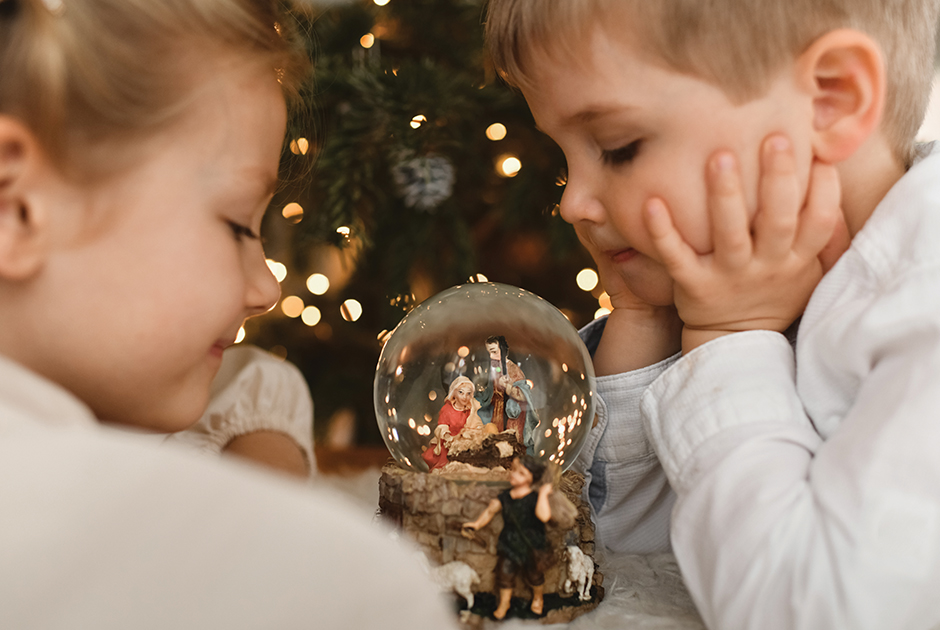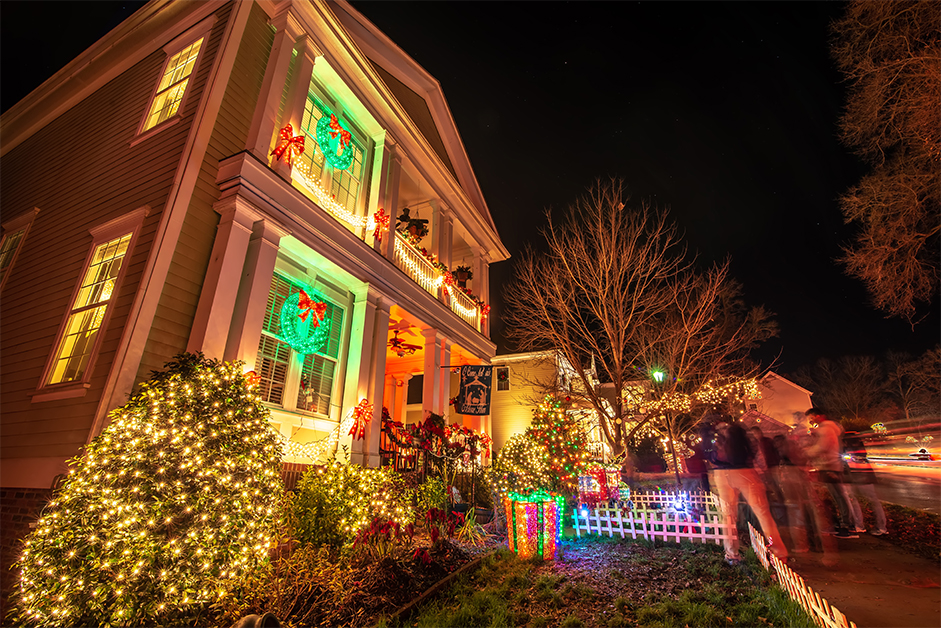From candles glowing in windows to angel-topped evergreen trees, the stories behind various Christmastime customs are rich in history and steeped in Christian beliefs. One of the most treasured holiday traditions is the re-creation of the very first Christmas – the nativity scene. Saint Francis of Assisi is credited with designing the first nativity in Italy, 1223 AD in an effort to shift the emphasis of Christmas away from gift giving toward the worship of Christ. This artistic representation of the birth of Jesus grew in popularity in Christian communities around the world and today, centuries later, nativities of all types and sizes are on display in homes, churches, stores, and any number of public and private places. Amid the flurry of ribbons and bows, shopping mall Santas, and all things exterior illumination, the simplicity of the nativity reminds us to slow down, reflect upon, and celebrate the ultimate gift of the season: the birth of Jesus.
Unlike many other holiday decorations, the nativity has a direct link to New Testament scripture. Two of the four gospels (Matthew and Luke) provide narratives regarding the birth of Jesus, but surprisingly, the details about the cast of characters around the swaddled baby in the manger are quite sparse. So, just how accurately do today’s nativities reflect the gospel events? As it turns out, biblical historians and nativity buffs agree that the scenes of today bear little resemblance to the day/night Jesus was born. Both the original Greek text and an understanding of the ancient Near East culture are needed to properly translate the events around the first Christmas (which was not December 25th…that date was later adopted by the Roman Emperor Constantine in the 4th century).
Following is a closer look at the events, individuals, and animals most frequently associated with the manger scene through this “informed” lens. Separating conjecture from scripture is an interesting exercise in uncovering misinterpretation and misrepresentation.
Biblical Nativity Scene:
Mary and Joseph made their way from Nazareth to Bethlehem an unspecified number of days prior to the birth of Jesus for the purpose of tax registration. Mary may have ridden to Bethlehem on a donkey, but there is no mention of this in the Bible.
When the couple reached their “hometown” of Bethlehem, the cultural hospitality practices of the day would normally have had relatives graciously open their homes to the couple or, as “royals” from the line of David, local townspeople would have been honored to do so.
The image of an innkeeper with a “no vacancy” sign posted on the door, turning Mary and Joseph away in their hour of need is often what we have in mind about the Christmas story, and it is easy to see how this idea came about. Scripture, however, supports a slightly disparate set
of circumstances. The Greek phrase “no room in the inn” is composed of “topos” and “kataluma” and is translated “no space in the guest room.”

A guest room in a common house was a small, empty room which offered a place of safety and privacy for the night. Those who permanently resided in the home slept in the main part of the house just above the ground level animal pens. And it was common in Eastern society for the family to be accompanied by a few milk goats, a donkey, and a cow as a way to protect their valuable assets from theft during the night. As such, there would have been a manger (aka feeding trough) in that room to keep the animals quiet in tight quarters until they could be returned outside to graze.
Scripture makes no mention of Jesus being born in a stable, but it does strongly suggest that Jesus was born in the lower portion of a common home as there was “no space in the guest room.” Thus, it seems that Mary and Joseph may have had to stay in the room where the animals stayed at night. With Westerners’ understanding that feeding troughs are found in the stalls of a stable/barn, the conclusion that Jesus was born in such an outdoor place is a reasonable one, although it is unfounded.
Additionally, scripture does not suggest that Mary gave birth on the evening of their arrival into town. The Bible states that while Mary was in Bethlehem, she gave birth to Jesus and that shepherds received word in the evening on the day of his birth (so it is easy to see how the leap to an evening birth developed). But while the Bible doesn’t provide the exact location or hour of day Jesus was born, scripture is very clear that Mary gave birth to Jesus, wrapped him in cloths, and placed him in a manger.
While many modern nativities reflect the presence of sheep, cattle, lambs, an ox and donkey around the baby Jesus, historians agree that any animals, as well as any men, that may have been present at the time of Jesus’ birth would have been ushered out. The ladies in the home (and perhaps a local midwife) would have been with Mary when she “brought forth her firstborn.”
And the angels? Luke 2 mentions an angel and a “heavenly host” appearing to the shepherds, but it does not support shepherds, an angel, or a unique star being at the location of the birth.
What about the wise men? The Bible specifically states that magi followed a star to locate and worship Jesus, but it does not specify how many wise men there were (we have assumed three because there were three gifts mentioned), how long it took to get there, if they rode camels or even how old Jesus was when they arrived. What is clear, however, is that when the magi eventually arrived, they found the holy family in a house and bowed down to worship Jesus.
While we may never know the exact facts and circumstances that Mary, Joseph and baby Jesus experienced at the time of Jesus’ birth in Bethlehem, the scriptural support for placing Mary and Joseph in an outdoor stable with baby Jesus in a straw filled manger, surrounded by barnyard animals, shepherds with their sheep, three wise men with their camels and gifts, a brilliant star and an angel is lacking. The good news, though, is that regardless of the accuracy portrayed in most present-day nativities, the center of the Christmas story remains the same: the celebration and adoration of the arrival of Jesus on that first holy night over 2000 years ago.
But what would a nativity be without this cast of characters that have become holiday tradition? Fortunately, personal aesthetics and artistic interpretation is not only permitted, but encouraged…whether assembling a few or many figurines, display what feels meaningful to you. Joy to the world! The Lord is come.



















